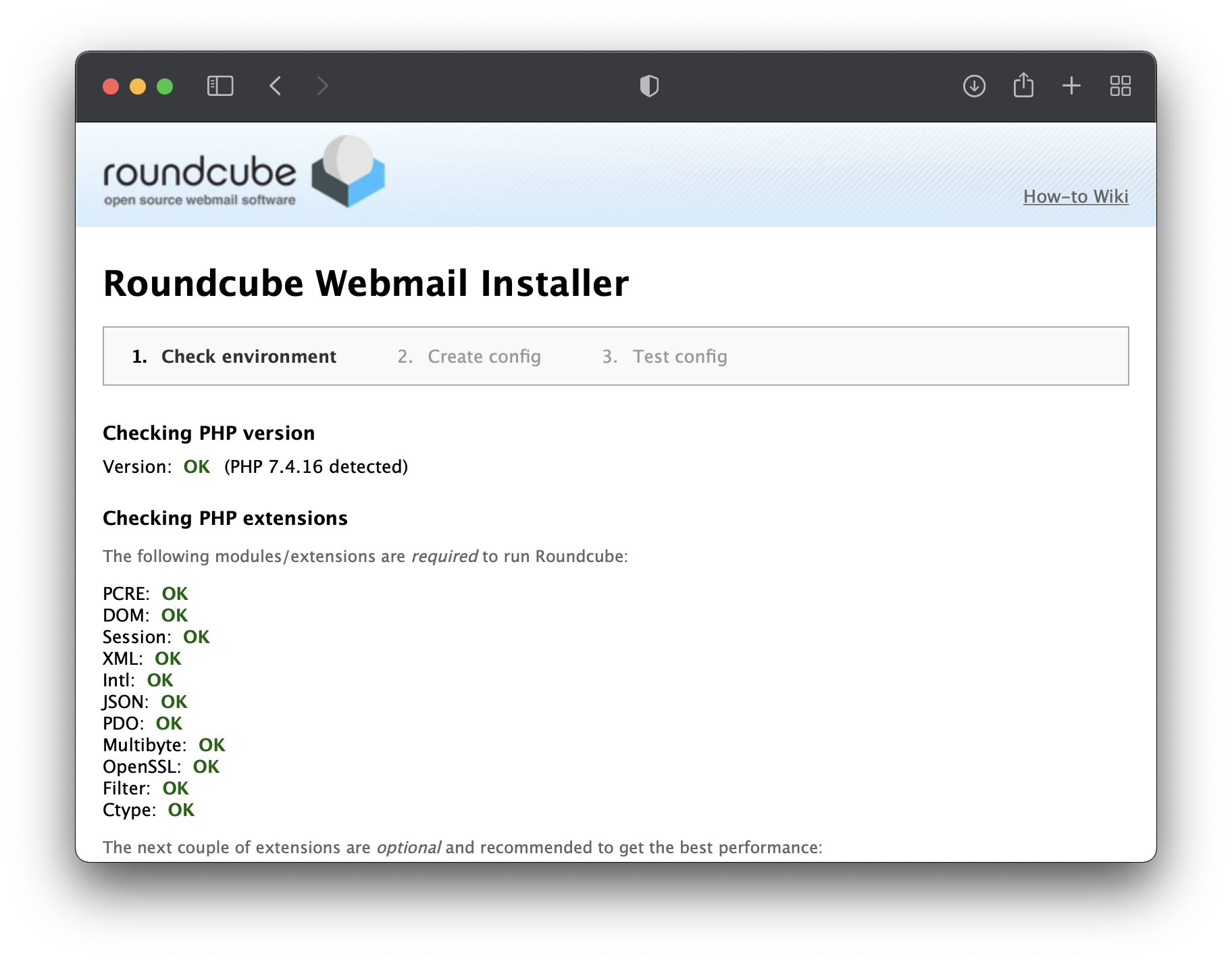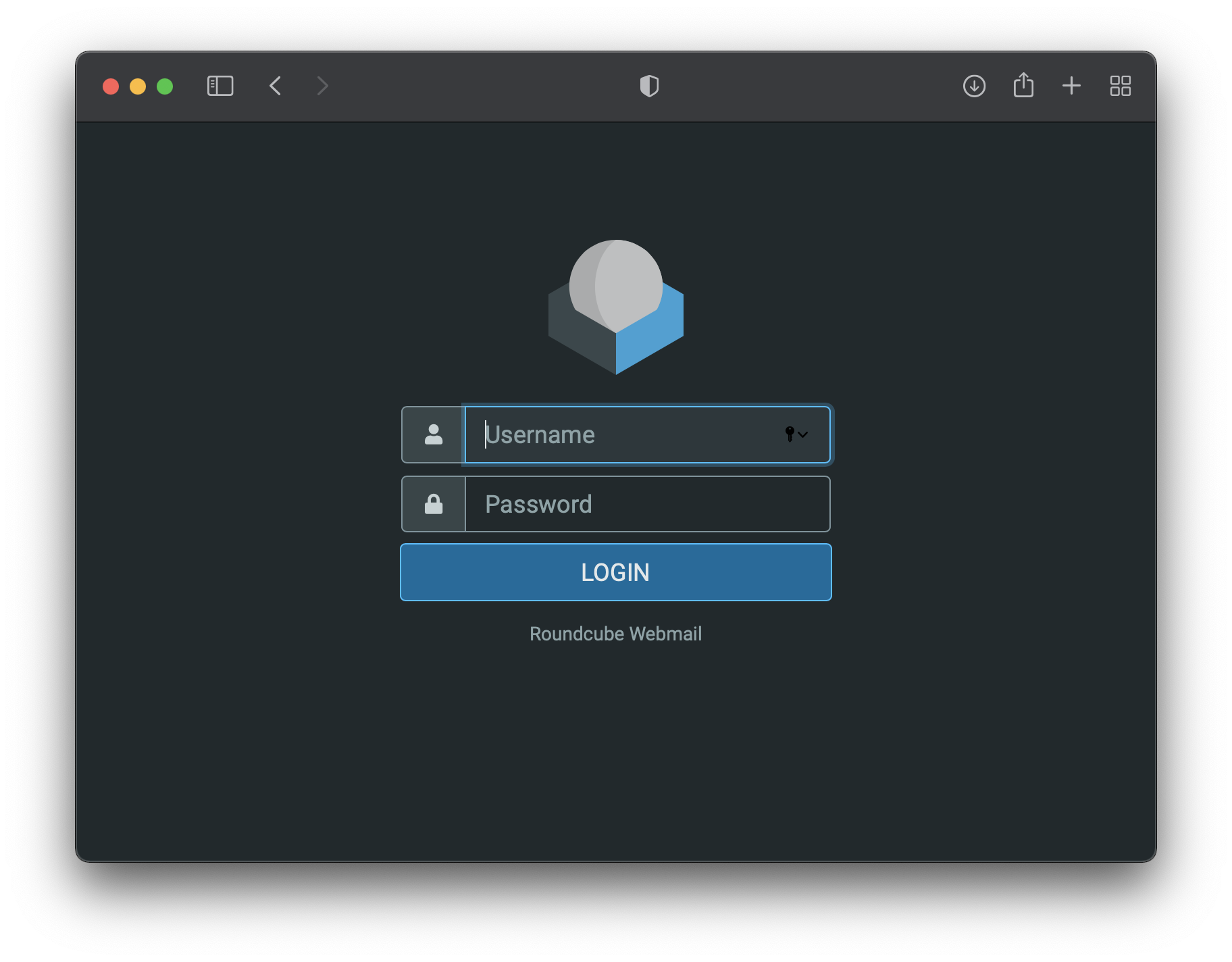Roundcube§
To run the Roundcube webmail platform using Unit:
Install Unit with a PHP language module.
Install and configure Roundcube’s prerequisites.
Install Roundcube’s core files. Here, we install it at /path/to/app/; use a real path in your configuration.
Run the following command (as root) so Unit can access the application directory:
# chown -R unit:unit /path/to/app/
Note
The unit:unit user-group pair is available only with official packages, Docker images, and some third-party repos. Otherwise, account names may differ; run the ps aux | grep unitd command to be sure.
For further details, including permissions, see the security checklist.
Next, prepare the Roundcube configuration for Unit (use real values for share and root):
{ "listeners": { "*:80": { "pass": "routes" } }, "routes": [ { "match": { "uri": [ "*.php", "*/" ] }, "action": { "pass": "applications/roundcube" } }, { "action": { "share": "/path/to/app$uri" } } ], "applications": { "roundcube": { "type": "php", "root": "/path/to/app/" } }
Upload the updated configuration. Assuming the JSON above was added to
config.json. Run the following command as root:# curl -X PUT --data-binary @config.json --unix-socket \ /path/to/control.unit.sock http://localhost/config/
Note
The control socket path may vary; run unitd -h or see Startup and Shutdown for details.
After a successful update, browse to http://localhost/installer/ and set up your Roundcube installation:

After installation, switch share and root to the public_html/ subdirectory to protect sensitive data, run the following command as root:
# curl -X PUT -d '"/path/to/app/public_html$uri"' --unix-socket \ /path/to/control.unit.sock http://localhost/config/routes/1/action/share
# curl -X PUT -d '"/path/to/app/public_html/"' --unix-socket \ /path/to/control.unit.sock http://localhost/config/applications/roundcube/root
Thus, Roundcube should be available on the listener’s IP address and port:
